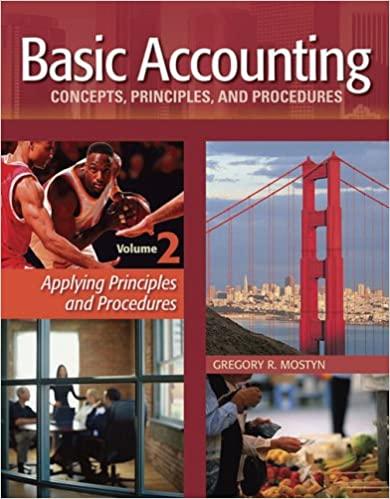Question
Your company produces licensed software for enterprise customers. The current strategy for acquiring customers starts with purchasing leads from a marketing lead vendor at a
Your company produces licensed software for enterprise customers. The current strategy for acquiring customers starts with purchasing leads from a marketing lead vendor at a cost of $10 per lead. Your experience with this lead source suggests that 5% of these leads are a good fit for your product.
You have hired a salesperson to reach out to each lead (both good and bad fits since you have no clue which is which) and assess its quality. This process involves determining whether a lead contact has a need for your software solution and has the budget and authority to purchase it. This initial sales contact costs $100 per lead (at the time of contact) but is not perfectly effective in distinguishing between good and bad fits for your product. Specifically, it correctly identifies 60% of good fits (and, conversely, wrongly identifies 40% of those as bad fits) and wrongly identifies 40% of bad fits as qualified leads (and, conversely, correctly identifies 60% of those as bad fits). For brevity, we will refer to this as 60/40 accuracy in the lead initial qualification process.
An in-person site visit is then conducted for qualified leads (assume this, and all other customer acquisition actions listed so far, occur at t = 0). This visit involves a product demo and the setup of a three-month trial for your product. This costs $500 per visit (at the time of the visit). Following the end of the free trial, 50% of good fits will purchase a perpetual software license for $15,000. This is paid immediately at the time of purchase - i.e., t = 0.25 in years. None of the bad fits purchase the software.
Additionally, you offer a year of free customer support to your paying customers (assume that you only start providing this after the free trial ends - i.e., after 3 months - and only to those that pay for the software). This support costs $500 per year to provide. Thereafter, you charge $1,500 per year for continued support. Both amounts are paid at the start of each support period. 80% of customers sign up for support after the completion of free support period and there is a 10% churn rate in this service thereafter.
(a) Under the current customer acquisition funnel, show that the value of a lead is negative. In coming up with a valuation, assume a discount rate of 15% per year (expressed as an effective annual rate) and no taxes.
Since the value of a lead is negative, you need to improve your customer acquisition strategy to be able to profitably scale your business. Assume that your set of leads falls into two categories: local and non-local leads. Both are equally likely to produce good and bad fits for your product. In fact, the only difference between the two categories is that the cost of in-person site visits is lower for local than for non-local leads ($200 vs. $800) due to additional travel costs when visiting non-local leads.
(b) Assuming that you can request only local leads from the marketing lead vendor (at the same $10 cost per lead), show that focusing on this lead category produces a positive value of a lead.
Suppose that you are focused on local leads and that your company introduces a referral incentive for existing customers. Namely, customers can get a $500 discount on their customer service subscription for each customer lead that they refer to you. This discount only applies during the year they refer the customer and, as a result, you anticipate that each acquired customer will refer 3 customer leads per year starting on the date that they begin needing to pay for customer service. Since this referral volume implies no payment for customer service, you also expect all customers will keep their customer service subscription indefinitely. Leads referred by existing customers have the same funnel probabilities as the leads coming from the marketing vendor.
(c) Assuming that the leads referred by existing customers do not overlap with those coming from the marketing vendor, what is the value of a lead following the introduction of the referral incentive? What is the ratio between the lifetime value of a customer and the cost of customer acquisition?
Step by Step Solution
There are 3 Steps involved in it
Step: 1

Get Instant Access to Expert-Tailored Solutions
See step-by-step solutions with expert insights and AI powered tools for academic success
Step: 2

Step: 3

Ace Your Homework with AI
Get the answers you need in no time with our AI-driven, step-by-step assistance
Get Started


